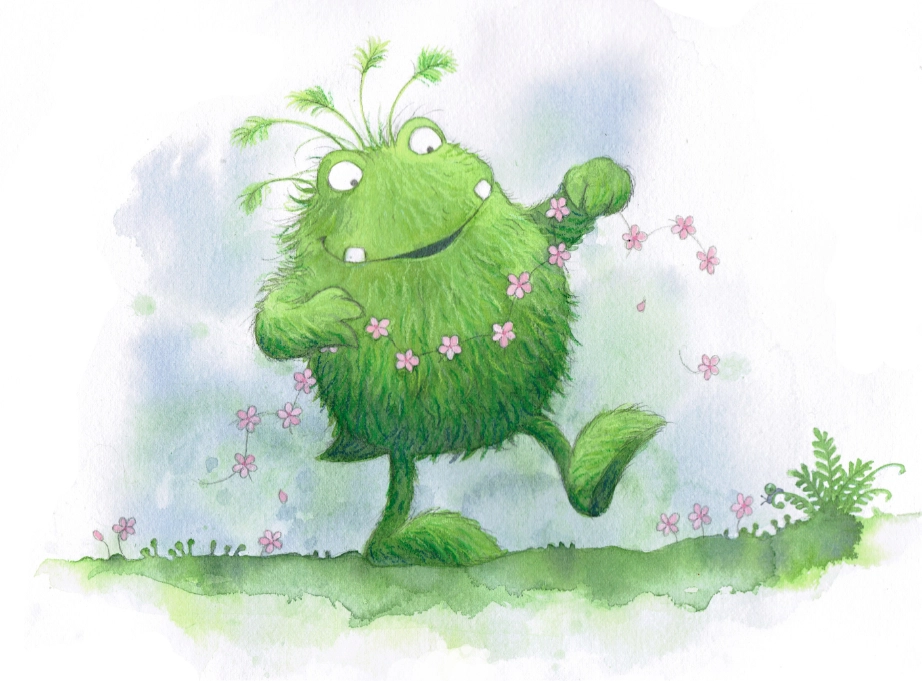
Image above: By Judith Rossell
Multi-award-winning author and illustrator Judith Rossell teaches Writing Picture Books and How to Write for Children and Young Adults at the Australian Writers’ Centre, and has been writing and illustrating children’s books for nearly 20 years. She was an illustrator first before adding writing to her repertoire, and has illustrated over 80 books, such as Skoz the Dog, Pink! and Bogtrotter.
 Judith has written 13 books, including the bestselling and ABIA-winning Stella Montgomery series – Withering-by-Sea, Wormwood Mire and Wakestone Hall and A Garden of Lilies: Improving Tales for Young Minds. She has also illustrated a number of her own picture books, namely Oliver, Ruby and Leonard and the Great Big Surprise, and Play With Your Plate.
Judith has written 13 books, including the bestselling and ABIA-winning Stella Montgomery series – Withering-by-Sea, Wormwood Mire and Wakestone Hall and A Garden of Lilies: Improving Tales for Young Minds. She has also illustrated a number of her own picture books, namely Oliver, Ruby and Leonard and the Great Big Surprise, and Play With Your Plate.
She shares with us 5 key tips for illustrators looking to follow in her footsteps.
1. Remember to work on your story fundamentals
You might come up with the idea for a book because you really want to draw the pictures – that’s fine, but your story still needs to be strong.
“Illustrators need to learn about structure and plot and character, and make sure that the story doesn’t let the pictures down,” Judith says. “That’s a real problem, that illustrators have an idea and they’re just wanting to write the story that goes with the particular picture. The story should always come first.”
2. You can tell parts of the story via illustrations
Your illustration isn’t just there to accompany the words – a picture book has such a small number of words that the pictures are a great way to develop the plot and characters. Illustrators often do well at producing picture books where the images and text tell the story together, Judith says.
“Sometimes the illustrations add in all the jokes or some amazing subtext, so don’t forget you don’t need the words to tell the story,” Judith says. “The pictures can tell the story just as well and maybe better.
“I love books like that, where maybe the words are saying one thing but the pictures are doing something completely else. I think they’re hilarious. Like the text says ‘Jim was always a very good boy’, and in the background you see Jim smashing the place up.”
3. Don’t get intimidated by writing
Judith says it was a big step for her to start writing, having been an illustrator, and she encourages illustrators not to feel nervous and to have confidence in themselves.
She began writing picture books because she had been illustrating maze books, and even though they had very simple text and elaborate illustrations she would get paid half and the writer would get paid half.
“So I did think, ‘Oh, I could do that.’ And I could, because it’s actually very easy to write. The text of the book is basically, can you find your way to the end of the line? It’s the concept – once you’ve thought up the idea behind it, the text is easy.”
Once Judith had become a writer in that format, she progressed to writing and illustrating picture books. Eventually she moved on to writing middle grade novels, which is most of what she does now.
4. Make a dummy book
For writer-illustrators with a story bursting forth but no idea of the words yet, one way to make that creative thought a reality is to construct a dummy book.
“For illustrators who want to write their first book, don’t feel that you have to sit down and write the text out,” Judith says. “Start with what works best for you, draw out the story. And then you can fit the words in later. If you can’t work out which words to write, draw it, and work your way into it.”
5. Use your editor’s help
If you’ve got a relationship with a publisher already, they may be able to help if you’re struggling to get the text perfect, Judith says.
“Publishers are really happy to help writer-illustrators with the text, because most editors are brilliant at text. So if the story’s there, the pictures are great, and the text needs a bit of work, that’s the sort of thing that publishers are quite open to.”
Want to explore the world of picture books? Discover everything you need to know about writing a magical story for little readers in our Writing Picture Books five-week course.
About us
Contact us